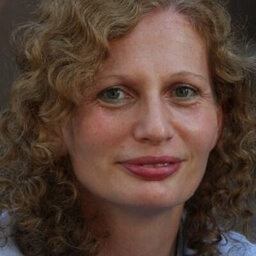What do you do with a Jewish cemetery in a town without Jews?
Shenandoah, Pennsylvania, once had a thriving Jewish community. What happened when their dead were left in one woman’s care?
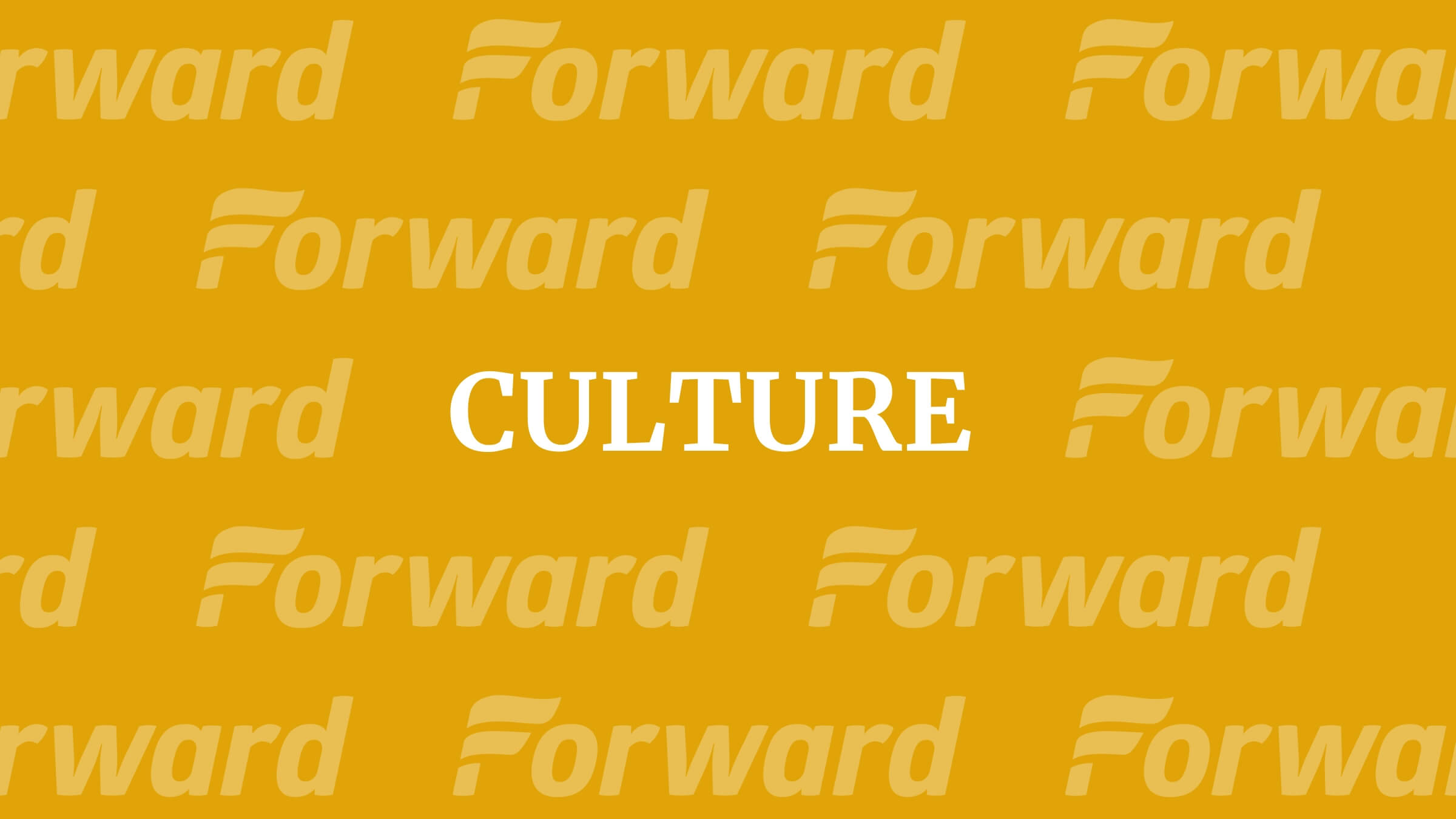
Graphic by Angelie Zaslavsky
“Some people inherit money,” Janice Apple Malett likes to say. “I inherited a cemetery.”
Malett was born in Shenandoah, in central Pennsylvania. The town’s population peaked at 26,000 in 1910, and it was once home to a thriving community of 125 Jewish families. But today just 4,000 people live in Shenandoah, and none of them are Jews.
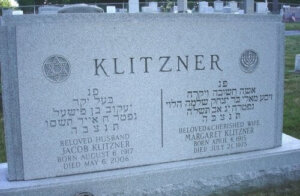
Malett’s stepfather, Jacob Klitzner, managed the cemetery, unpaid, after the previous volunteer caretaker died. Klitzner “happened to live across the street from the funeral parlor, so he got the calls when there was a death,” Malett recalled.
“The family might be in Florida or the Catskills, but he made all the arrangements. He’d go up to the cemetery, make sure the grass was mowed, and if it wasn’t mowed right, he’d fire the person and hire someone else. He made sure it was all well-maintained — the walls, the gates. When there were complaints about roots growing underneath the graves, he had the trees removed.”
Malett’s mother, Bessie, kept the finances straight. “She was extremely organized — was it paid for, was it not paid for,” Malett said. Whenever anyone bought a plot, she wrote it down by hand: 50 cents from Mrs. Cohen this week, $1 from Mrs. Cohen the next week.
Who will cut the grass?
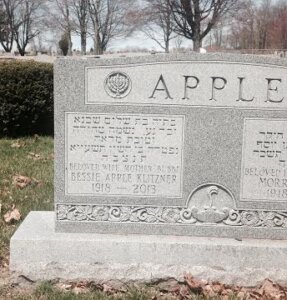
But Malett’s mother started worrying about the cemetery when Klitzner died in 2006.
“We were walking to put his body in the ground, and that’s when it started,” Malett said. “She said, ‘Oh, the grass needs to be cut. He’s the one who took care of that. Who will cut it now?’”
Malett said the cemetery was her mother’s “baby. People would write her letters, people whose parents were born and buried in Shenandoah, who had all those memories, saying, ‘Thank you so much for doing this.’”
At one point, her mother “put her head in her hands and said, ‘Well, I guess no one will take care of the cemetery when I’m gone.’ And that was my cue.
“I said, ‘OK, Mom, I’ll do it.’”
The Sons of Abraham
Jews fleeing pogroms in Eastern Europe first arrived in Shenandoah in the 1880s. They were “landsmen,” meaning they and their kin were from the same shtetls in Russia, Latvia, Lithuania and Poland.
Shenandoah was a coal mining town, but Jews “didn’t work in the mines,” Malett said. “They sold donuts. They had a jewelry store, and a clothing store. They were businesspeople on Main Street.”
They called themselves the Sons of Abraham, and they called their shul and cemetery Kehillat Israel. Kehillat is Hebrew for an organized Jewish community, and that community of just 125 families was robust enough to sustain a community center, a synagogue with a Hebrew school and a full-time rabbi.
But they didn’t cluster in any particular section of town; they lived amid their non-Jewish neighbors, got along with them fine and sent their children to public school.
Malett’s parents moved to Harrisburg, a 90-minute drive over a mountain, when she was 3, but her grandparents and other relatives remained in Shenandoah. “We were back and forth constantly,” she said. “Listening and remembering my mom and dad’s stories, it was a wonderful place to grow up” — despite the fact that things could get raucous. There was a saloon on every block, including one next to her grandfather’s bakery. When she and her brother visited, “we were up all night long with all the brawling that went on next door.”
Her great-uncle was shot during a coal miners’ riot when a bullet went through the window of the jewelry store where he worked. He was buried in Kehillat Israel, along with “every one of my family — my mother, my father, all my grandparents, a great-grandparent, my brother, and eventually me and my husband. My DNA is in that ground.”
The minutes, in Yiddish
Shenandoah’s synagogue is now an evangelical church for the local Latino community. But the stories and spirit of the shul can be found in a book of minutes, including 200 pages in Yiddish, dating back well over a century.
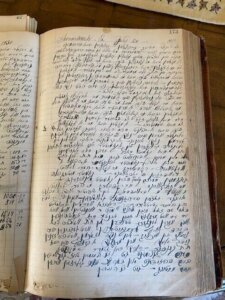
“It’s a combination of this wonderful community that came from Europe and made a life, an American Jewish life, in a small coal region, along with stories that could be right out of Sholem Aleichem,” said Malett.
During Prohibition, for example, the shamash — the synagogue’s caretaker — operated an illegal liquor still out of the mikvah and had to be run out of town. Another entry in the minutes tells of a butcher hired to provide kosher meat that later turned out to be treyf.
And during World War II, those 125 families sent 112 men and women off to war as nurses and soldiers. One served in the Battle of the Bulge, one liberated concentration camps; there were fatalities, heroes, POWs and a cardiologist stationed in Palestine who donated his unused medical supplies to what became Israel’s Sheba Medical Center.
But what really amazed Malett was that each meeting where problems and projects were discussed was run according to Robert’s Rules of Order. “This immigrant generation could barely speak English, but they would open every meeting with a motion, and then second the motion — they were very, very thorough.”
The minutes, which are in Malett’s possession, are gradually being posted online, but she’d like to find a home for them in a research archive.
Fulfilling the promise
After Malett’s father died, her mother remarried — to Klitzner, the man who took care of the cemetery — and moved back to Shenandoah. Then, for the last few years of her life, she relocated to suburban Westchester in New York, where Malett lived. How on earth was Malett going to keep the promise she’d made to keep the cemetery going when they lived four hours away?
Eventually Malett rounded up three other people, all with deep connections to Shenandoah like hers, set up an association, elected officers, raised money and hired an attorney. They also got permission from the few Jews who still lived there then to make decisions about the cemetery and manage the $600,000 that had been collected over the years for burial and “perpetual care,” a standard provision of purchasing cemetery plots.
Though the money had carefully been kept separate from the synagogue’s accounts, it had been placed in an irrevocable trust. The local bank had sold that trust to a holding company in Louisiana. The Louisiana bankers traveled all the way to Pennsylvania to try to persuade Malett that they could manage the graveyard from 1,300 miles away, but “they were clueless,” Malett said. Ultimately, with a judge’s ruling, her association got control of the trust.
But they still needed a way to manage upkeep and future burials. They were fortunate to find a partner in the Jewish Community Foundation of Central Pennsylvania.
The foundation’s executive director, Paulette Keifer, said the organization now manages five cemeteries “where Jewish communities are altogether gone or have very few people remaining. It is happening nationwide.”
She said that although managing cemeteries “is not really what we do,” the foundation leadership “saw it as a mitzvah and necessary.”
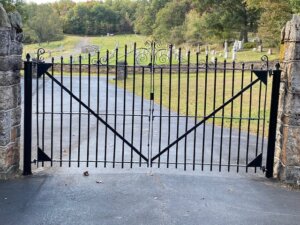
But she stressed that it was only possible because Shenandoah and the other communities had made plans long ago and maintained the necessary funds. “People who are lost to you, who trusted their eternal rest to you, have a right to expect you to plan to take care of these cemeteries appropriately,” she said. “If a tree falls, if a wall falls, or a gate — it’s not just cutting the grass. What do you want this cemetery to look like in the future?”
Keeping Shenandoah alive, virtually
Malett no longer worries about Kehillat Israel’s 480 graves, which date from 1888 to this year. Nor does she worry about its promise to shelter the remains of people like her, who intend to be buried there in the future. She’s certain it’s in good hands now.
These days, what’s just as important is a website for stories about the people who are spending eternity in that beautiful spot up on a mountain.
The Kehillat Israel website, according to its landing page, “honors the memories of this once unique and special place and of those immigrants who created a viable and thriving Jewish community in America.”
“This is our legacy,” said Malett. “The website is the history of the community. And the cemetery has become more than the cemetery.”
